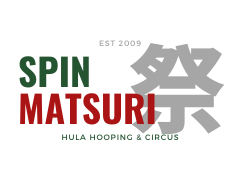For performances of any sort, from hoop dances to rock concerts to circus acts, it is critical to “engage your audience.” But what does that mean and how can you do it?
Engaging your audience means giving them a way to connect with you and your performance. It isn’t as much about you connecting with them, though engagement definitely goes both ways. One oft-cited method of engaging the audience – looking at them and smiling – is a fine idea but it only opens a connection, it doesn’t truly engage. There are, in my view, three primary methods to engage the audience
- Sense of Wonder
- Emotion
- Interaction
A sense of wonder might be expressed by the audience as “How does she do that?” or “I’ve never seen anything like this.” This is both the most simple and the most challenging form of engagement. Everyone is a critic! As a performer, you invoke wonder by a combination of your flawless technical skill, your bravery, and your creative act development. Practice excessively and play foolishly to get skilled for this sort of engagement. Or perform for audiences who don’t normally see your sort of craft.
Emotional engagement comes via a “that could be me” feeling or connection to the audience’s personal experience. In a troupe of performers, relationships between the characters provoke emotional responses in the audience. In music, lyrics in combination with the musical arrangement evoke emotion. The emotionally engaged audience cares what happens to the performer, roots for (or against) her, is happy for her success. To create this sort of engagement make sure your act has a story, a personality, or an abstract but obvious emotional component.
Interaction is classic among buskers and clowns who bring someone up onto stage to help out or try their skill. That is lots of fun in the right context, but it is not the only sort of interaction you can use in a performance. Getting the audience to clap to a rhythm, inviting them to make suggestions, or having them call out a word on cue are all good ways to interact with a crowd who can’t be on stage with you. Even applause is interaction and you can subtly ask for applause with a directed gaze or a pause at the end of an especially difficult or well-executed move.
Best of all is a combination of two or all three of these forms of engagement.
Think about one of your recent performances. How did you engage the audience? Can you think of a way to change your act to encourage more or deeper engagement?
